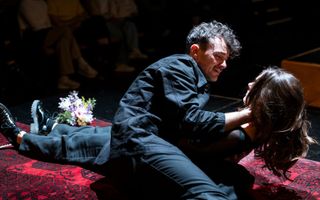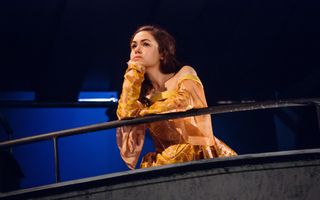 On Stage
On Stage
Romeo and Juliet is a play full of oppositions: characters are opposed, images are opposed, ideals are opposed. These oppositions are presented in Shakespeare’s choice of language and images, and are known as ‘antithesis.’
When reading the play, look for the many examples of antithesis within the play.
1. List one moment from the play that aligns with each of the following oppositions:
- Light and dark
- Fate and free will
- Love and hate
- Life and death
- Public and private
- Past and present
- Fast and slow
- Youth and age
- Dreaming and reality
For example:
Light and Dark
Romeo and Juliet wish that it would still be night so that Romeo would not have to leave for Mantua. The lark represents morning while the nightingale represents night. Juliet says:
Wilt thou be gone? It is not yet near day:
It was the nightingale, and not the lark...
Act 3, Scene 5
2. One you have chosen your examples, find a quote from the play that clearly demonstrates the antithesis. Explain why you think these opposing forces are in conflict at this point.
Extension task – Get into pairs and choose one pair of opposing forces e.g. love and hate, to work on. Each student chooses one side of the opposing forces each to represent, ie. either love or hate, and then individually develops an argument to defend their side, proving why their side is a stronger force. Use examples or quotes from the play of instances when you believe your force has dominated the action of the play.
This final exercise can even be enacted as a whole class debate with two separate panels representing each side.






